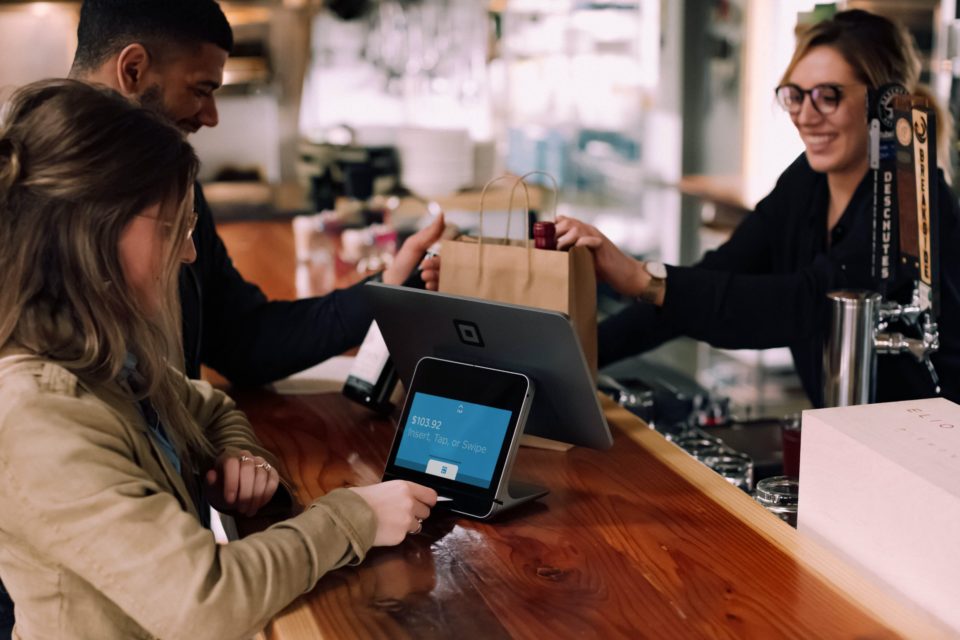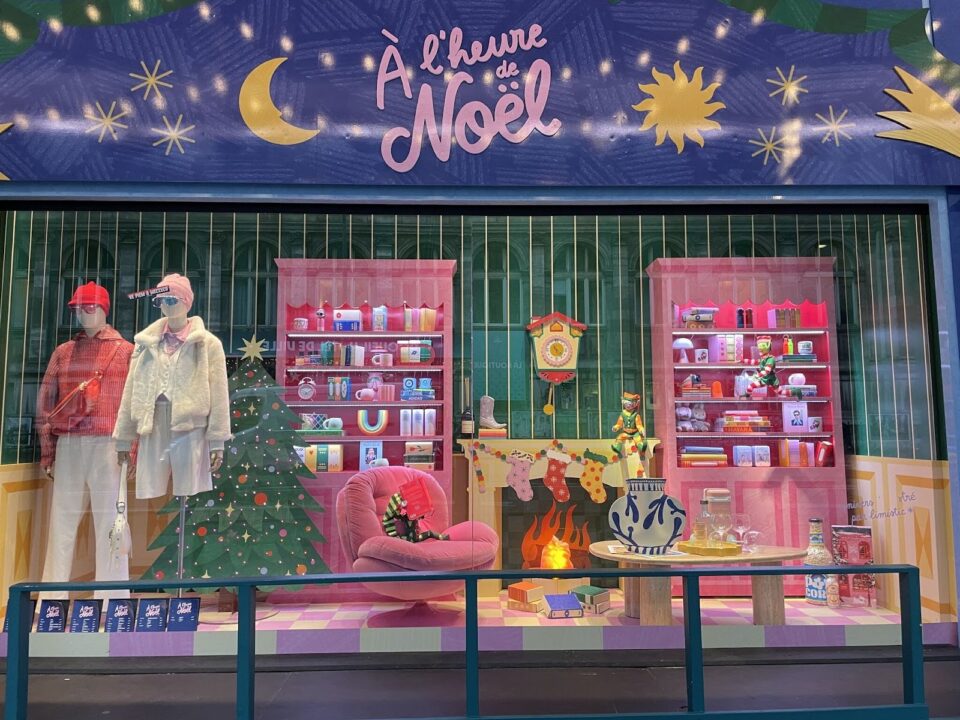Trendsetters: Future of Retail with Jared Schiffman of PERCH
Our trendsetter interviews normally end with us asking who our interviewees really rate. When two of our previous interviewees recommended Perch Interactive, we knew we had to get on the phone to New York.
Perch is a display system for retail spaces. It combines projected digital images with physical stock, letting consumers interact with and influence the display.
We spoke to Jared Schiffman, Founder of Perch, about the system’s most innovative uses and the retail trends that he’s identified.
Can you give me a really simple description of PERCH?
PERCH is a technology that turns any traditional retail display into an interactive display. It’s really all about three things – media, product interaction and analytics. The analytics mean that brands can track when people pick up a product and the items they find most interesting.
The PERCH unit is basically a box that sits, or perches, above a table and project images onto the table. Simultaneously we use a 3D camera to sense how people’s hands are moving around the table and the location of the products. There’s a computer inside as well that’s driving the interaction.

Of the clients who have used it, who are you particularly excited about?
We were excited to work with Kiehl’s on a campaign around a new line of fragrances. We also worked with Cole Haan, a high-end shoe company in the U.S.
We’ve worked a lot with Story, which is a store that changes its entire line-up every month and essentially presents an entirely new store.
There are always things that we do for every project to ensure the design is accessible, highly engaging and effective. We combine these universal principles with an understanding of each specific client’s brand, what their story is and who their audience is. That way, we build something that’s appropriate for them.
What was it about the Kiehl’s experience that made it really stand out?
Kiehl’s wanted to make it clear that each of their fragrances comes from a different part of the world, and that each one has an exotic travel story or international component.
At the same time, the Kiehl’s brand is very authentic, artisanal and handcrafted. We took a postcard that was sitting in their office – it was of a world map from the 1800s. We made that the backdrop. Just by establishing this old map as a visual context, it immediately set the tone for how consumers understood the fragrances.
The fragrances themselves are in beautiful glass bottles but they don’t tell the whole story by themselves. When you pick up the product, that’s when the whole thing evolves. The display springs to life – a little plane flies from the location where you pick it up to one of four other locations on the map – Provence, Uganda, Morocco or Tokyo. After the plane arrives you get a visual presentation that provides you with the two main notes of the perfume and a romantic representation of the place to which it’s linked. There’s also more information behind that on a little virtual postcard that you can pull out.

So what’s next for PERCH? Do you have plans to develop it and include other technologies?
Our core mission right now is to establish PERCH as a platform; to convince people that this is not a one-off experience. In five or ten years’ time, it could be used on surfaces in every type of retail store.
Right now we’re focussed on addressing horizontal surfaces and we’re going to be working on vertical surfaces soon. We’re going to launch a smaller version. We want retailers and brands to see this as a fixture in the store that they can update every time they put a new product in place.
In terms of sectors that we’re focussing on, we began with accessories – they’re a fun place to start and there are always good stories behind them. We’re now heading into working with cosmetics – I feel that that’s an area where we really can change the store experience. Not everyone likes the traditional cosmetic experience where you go up to the counter and have someone help you.
We’re looking at consumer electronics too, but we’re seeing more of the fashion and cosmetics side because we’re based in New York.
Can brands program your system or do you program it for them?
The platform is pretty open at this point. Almost everything we’ve done so far has been either on our own or in collaboration with clients.
Our goal for the next six months is to really get Perch out there and in the hands of agencies and the internal teams at brand retailers, so they can begin programming it themselves.
The nice thing about software is that it’s infinitely malleable. The PERCH platform is as malleable as the software behind it. We’ve only just begun to scratch the surface in terms of different ways to use the platform as a whole.
Are the systems updated remotely?
Yes, we have a ‘cloud’ system, which provides three functions. The first is just that, being able to update the content on the units remotely. Say your company has fifty stores – you can log on to our cloud network and see every unit in every store, and also every campaign or PERCH display that you’ve ever created. And you can assign them across those different stores. The content gets downloaded at night when the store’s not open.
The second thing that the cloud does is monitor the PERCH units, so they’re pinging home to make sure that they’re working and that everything is going as planned.
The third piece is the analytics component. For every table you can see exactly what people are touching, and when. You might find that people are going for the red handbag first but then actually buying something else. You can even look at what people are touching on the table – maybe they just want to look at details, or just at photos, and you can track that across stores.
Is projection always how you want the information to be displayed or could it be on an ‘iPad style’ table?
I think in the long-term we could work with any number of technologies. We chose the projection configuration that we did for a couple of reasons. Firstly, it allows us to work with the existing furniture – you don’t have to replace any tables or make special modifications. In fact, if you have a table of a certain design, or a certain colour, we can work with that.
Another is that by placing the projector above the table we use the projector as a dynamic lighting system. You’ll notice that in almost every Perch example there’s a sort of white halo around the product – literally spotlighting the product and bringing additional light onto it.
The last reason is that our sensors work in 3D – we can see if someone’s near a product; if their hand is beginning to touch it. We look at the entire space around the product – with a touchscreen you can only monitor when people directly touch the surface.
Which better represents the future of retail – in-store displays or smartphones?
There are a few issues that make mobile campaigns less effective. Firstly, any mobile technology means you have to entice people to take their phones out and use them in store. Even then, they’ll often use them to look for a better price so it can actually make life harder for retailers.
There are all kinds of fun apps that retailers can build, but if someone has to take out their phone and then go to the app store or a specific website, it’s unlikely that consumers will actually engage with that content.
With PERCH you don’t need any device – it’s immediately accessible. We think of it as technology that’s secondary in a way – the primary interaction is with the product. People have specifically come to the store in order to interact with it. Our goal is to make that process more rewarding, more educational and more entertaining. It’s not technology for the sake of technology.
Thinking of my own perspective as a shopper; when I’m at home, shopping for something online, I spend half an hour and obsess over something. But when I go to a store, I want it to be a relaxing experience. I want it to be an enjoyable experience. I’m there to actually see the products first hand. That’s what we built PERCH around, rather than trying to stuff in as much as possible. We built it around the natural interaction that is already there.
At this point I think of mobile as more of a technology for consumers. PERCH is very much on the retailer’s side. Hopefully being on the retailer’s side will create a better experience for consumers.
Who’s your dream client?
Our dream client is interested in extending their existing campaign into their store space, whilst being as excited as we are about creating a new experience. They’re not just coming and asking us to make shiny pictures.
What other changes or shifts do you see ahead for technology in retail?
Everyone is expecting NFC – Near Field Communication – to at some point take over. If you put a NFC chip in every product then you can scan a product with your phone and learn more about it. You can also use NFC for mobile payment.
It’s going to change the way that stores operate. A lot of people have a vision that eventually you’ll be able to walk around a store, tap into your phone and purchase something on the fly. I think that will happen, but there will always be the security issue of knowing whether someone’s paid for something when they walk out. I don’t know if there’s a good solution to that yet.

Who do you really rate in the retail sector?
One company that’s always doing exciting things is Nike. They’re tech-forward and have a really good understanding of what the potential of technology is when it’s merged with media.
Bill Moggridge’s book on interaction design really informed the work that we do. It’s about the processes that designers go through when developing technologies – things like the mouse or the iPhone – that change the way people interact with things.
Images: PERCH http://www.perchinteractive.com/



